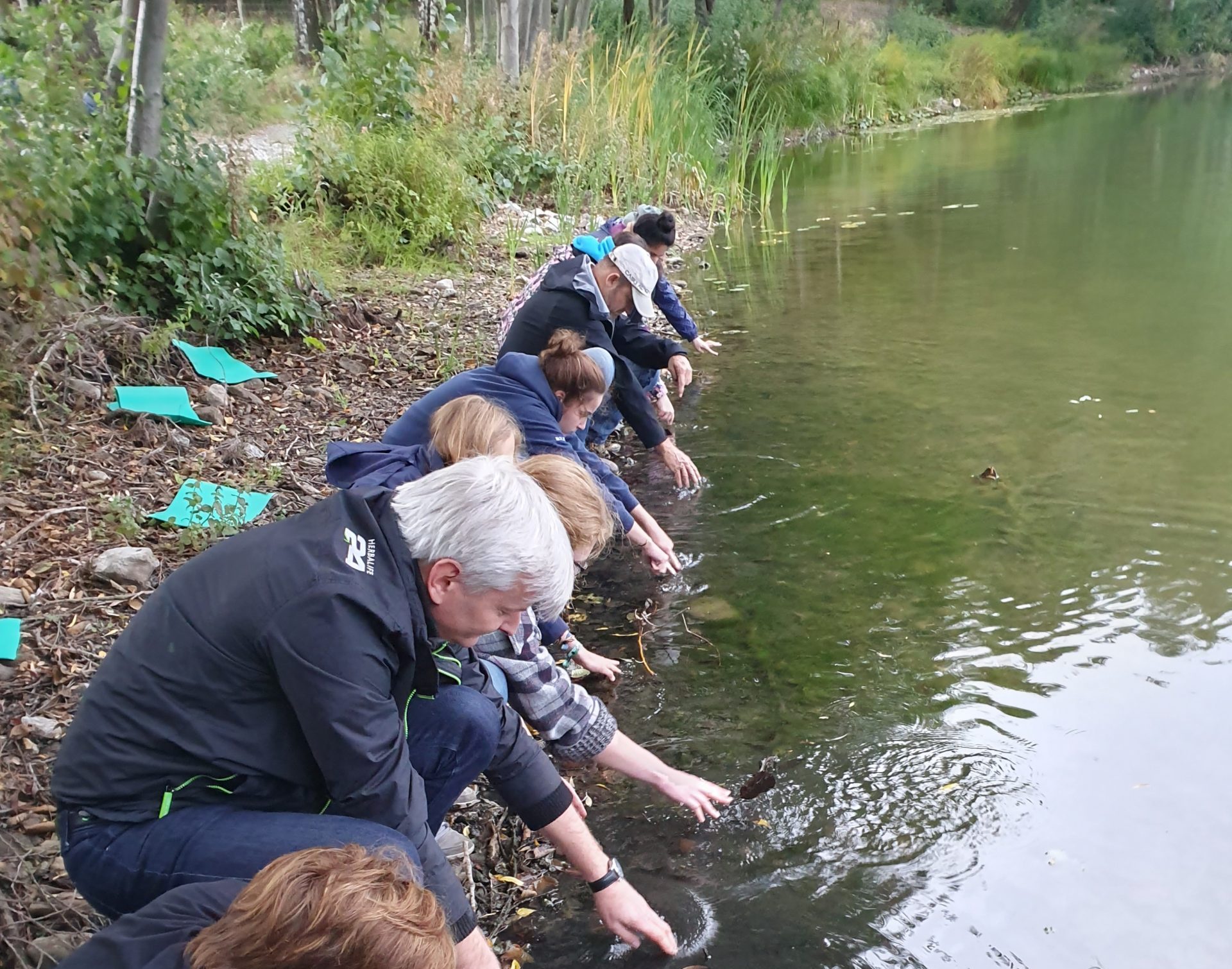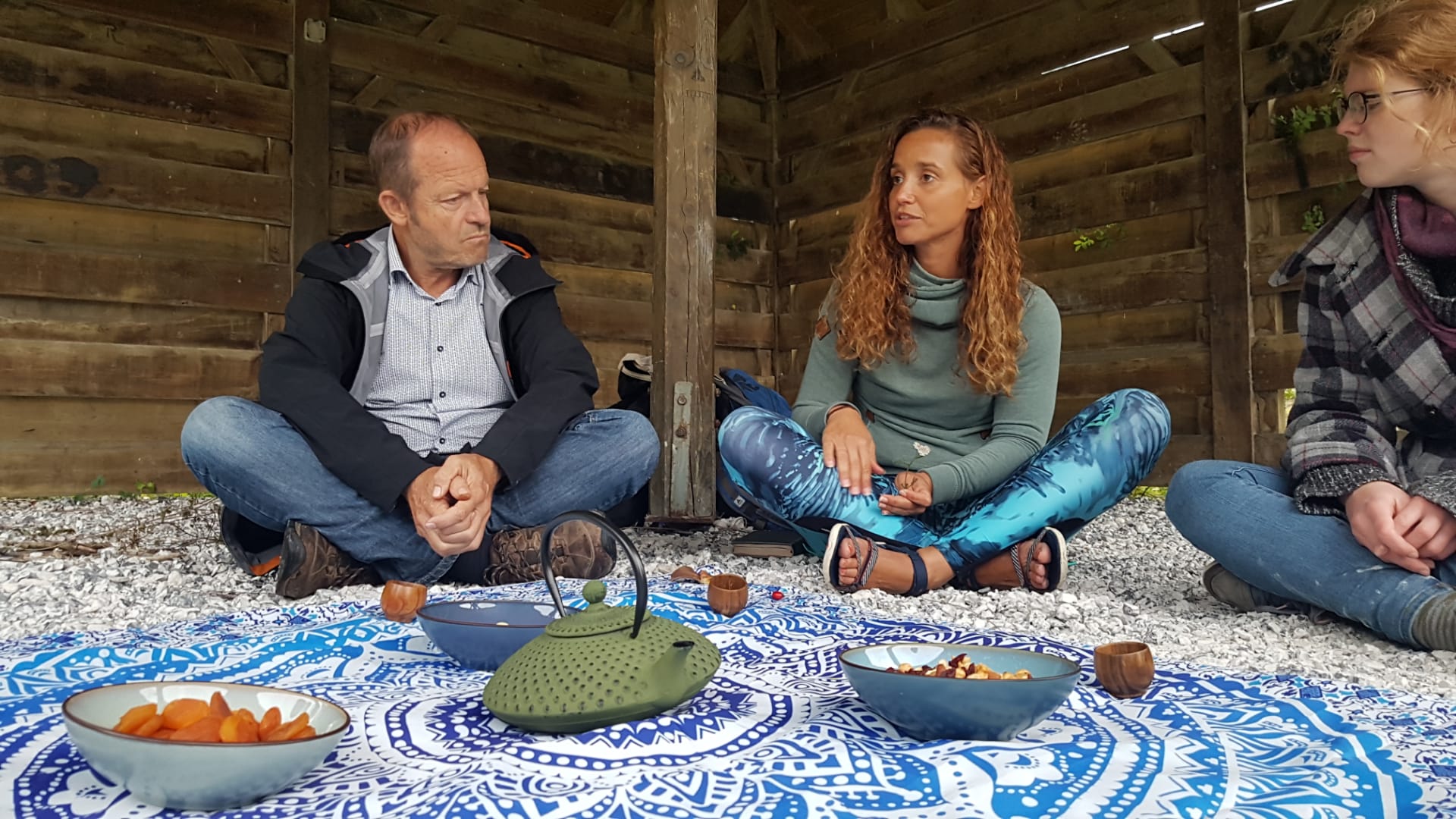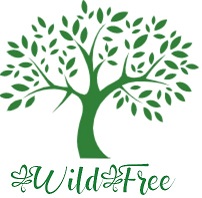Forest Therapy, Shinrin-yoku, Forest Bathing.
Many names for the medicine of being in the forest.
Forest Therapy, also known as “Shinrin-yoku,” refers to the practice of spending time in forested areas for the purpose of enhancing health, wellness, and happiness. The practice follows the general principle that it is beneficial to spend time bathing in the atmosphere of the forest. The Japanese words translate into English as “Forest Bathing.” Although I am inspired by the Japanese practice, the practice of Forest Therapy is not specifically a Japanese practice. There is a long tradition of these practices in cultures throughout the world. When I speak about Forest Therapy, I mean spending time in nature in a way that invites healing (physical, mental, emotional and spiritual) interactions. It’s not just about healing people; it includes healing for the forest, river, desert, or whatever environment you are in.

There are an infinite number of healing activities that can be incorporated into a walk in a forest or any other natural area. An activity is likely to be healing when it makes room for listening, for quiet and accepting presence, and for inquiry through all the sensory modes we possess: the 5 common senses and additional senses such as proprioception, intuition, heart sense and subtle energy sense.
My Way of Forest Therapy
I have been trained by the Association of Nature and Forest Therapy (ANFT) and during that 6-month learnt the theory and philosophy and mastered the skills to teach the practice effectively. The ANFT has developed a specific approach to forest therapy that is widely emulated around the world. They have trained over 800 forest therapy guides who are working in 48 different countries on six continents. In every cultural context, the ANFT framework for forest therapy is providing the right combination of foundational structure and open-ended creativity for the practice to take root.

My practice is embedded in a core set of principles and values:
1. There is a specific intention to connect with nature in a healing way. This requires mindfully moving through the landscape in ways that cultivate presence, opening all the senses, and actively communicating with the land.
2. It is not something to rush through. Shinrin-Yoku walks are not undertaken with the primary goal of physical exercise. We prefer to avoid the term “hiking” because of its implications of physical exertion. As taught by the Association, Shinrin-Yoku walks are typically a mile or less and range in duration from two to four hours.
3. Healing interactions require giving generous attention. I encourage becoming fully present through an evolving series of invitations given by me as a guide, who has learnt to listen deeply to the forest and often co-create these invitations in the moment, working in partnership with the forest and what it offers. Each invitation is crafted to help participants slow down and open their senses, giving the forest access to our emotional, physical, psychological, and spiritual being. As we do this we begin to perceive more deeply the nuances of the constant stream of communications in any natural setting. We learn to let nature and its messages penetrate into our minds and hearts more deeply.
4. Forest Therapy is best seen as a practice, not a one-time event. Developing a meaningful relationship with nature occurs over time, and is deepened by returning again and again throughout the natural cycles of the seasons. Like yoga, meditation, prayer, working out, and many other worthy endeavors, shinrin-yoku is a practice. And because it is a practice, it is best to learn it from a qualified guide.
5. It’s not just about taking walks in the forest. The walks are important, but there are other core routines that we can do that will help in our deepening relationship with nature, and in the exchange of health benefits between humans and the more-than-human-world. I always incorporate some of these practices in my guided walks.
6. Forest Therapy is not an extractive process, where we treat forests as a “resource” from which we extract wellbeing for humans. Instead, it is a deeply relational practice, characterized by a sense of loving and tender connection. This connection leads naturally to an ethic of tenderness and reciprocity. Forest therapy is about creating relationships between humans and the more-than-human world, in which the relationship itself becomes a field of healing and a source of joyful well-being.
7. Besides being a deeply healing practice, Forest Therapy is also an emerging community of friends and activists who are making a global impact. As we learn to love the forests, we become more engaged in working for their well-being.
